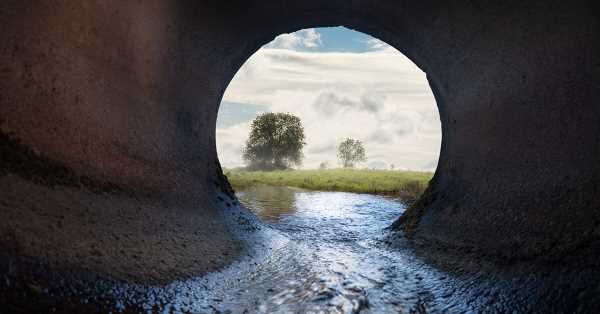
- A new paper collates the latest research on soil pollution and its effects on human health.
- The report describes the links researchers have found between soil pollution and cardiovascular disease.
- The paper highlights that avoiding soil pollutants such as heavy metals, plastics, and pesticides to eat healthier requires a more active, knowledgeable consumer.
Recent research has made it abundantly clear that humanity’s polluting ways have negatively affected the air and water on which we depend. A new article explores the growing danger beneath our feet.
The paper focuses specifically on the link between pollutants in our soil and an increased risk of cardiovascular disease.
“In recent years, air pollution has received significant attention as a risk factor for cardiovascular disease,” Mt. Sinai cardiologist Dr. Michael Hadley, who was not involved in the study, told Medical News Today.
“By highlighting the critical threat of soil and water contamination, this article helps us broaden our attention to pollution in general,” he said.
Dr. Monica Aggarwal, of the University of Florida Division of Cardiovascular Medicine, who was also not involved in the paper, agreed. She explained to MNT how we may often forget to think about the soil in which our foods are grown:
“I think that we as a society look at food as a point in time. We see the food in the grocery store, then we buy that food to nourish our bodies, and we will be healthy. Right? What we have forgotten is that food is more than one point in time and there are many elements that go into good growth.”
“This article reminds us that food needs healthy soil, clean air, biodiversity, and clean water to grow,” she stressed.
“More broadly, this article is an illustration of our growing understanding of the critical role of the environment — the ‘exposome’ — as a determinant of global cardiovascular health.”
— Dr. Michael Hadley
Hannah Shayler, of the Department of Crop and Soil Sciences at the Cornell Waste Management Institute, told MNT:
“Environmental health — and particularly soil health — is intricately linked to human health. By building healthier, more sustainable, nutrient-rich, less-polluted soils, we can reduce the harmful health effects of soil toxins and contaminants.”
The paper is published in Oxford Academic.
Pollutants in soil
The authors of the paper cite the critical role soil plays for the environment and human health:
“The thin crust of the Earth’s surface supports all terrestrial life and is involved in the regulation and provision of many key ecosystem services that are essential to the environment and to human health and well-being. Soil is the foundation of the agri-food system and the medium in which nearly all food-producing crops grow — about 95% of the food we eat comes from the soil.”
The main threats to human health in soil are macro- and microplastic, deforestation, pesticides, over-fertilization, and heavy metals.
“The article highlights that environmental exposures such as excess fertilizers, micro and macro plastics, deforestation and poor water quality among others are leading to a lack of soil biodiversity which creates imbalance in the ecosystem. It reminds us that ultimately, these exposures lead to poor soil quality, which then leads to unhealthy foods.”
— Dr. Monica Aggarwal
Heavy metals, metalloids, and pesticides may produce oxidative stress, which is recognized as a trigger for a range of non-communicable diseases. Metals such as cadmium and lead, in addition to metalloids such as arsenic, are linked to cardiovascular disease.
Workers in the fields at risk
Those involved in agricultural work are at special risk, says the paper:
“It is estimated that 25 million agricultural workers per year are affected by pesticide poisoning.”
The paper also notes that “pesticides used in agricultural fields are associated with an increased risk of developing several chronic diseases such as diabetes, cancer, and asthma as well as a variety of short-term problems (e.g., dizziness, nausea, skin and eye irritation, and headaches).”
“There is certainly not enough understanding of the impact of soil pollution on chronic illness,” said Dr. Aggarwal.
“We are just starting to consider the impact of the lack of soil diversity and how phytonutrient quality could potentially be hindered by how food is grown. Much work has to be done, and fast,” she said.
Dr. Hadley said the report raises a needed alarm:
“I suspect that many health communities and healthcare workers have a somewhat limited understanding of the severity and pervasiveness of soil pollution, particularly with regards to the cardiovascular impacts. This article can help raise awareness of this critical issue.”
Eating more safely
When asked how consumers can reduce their exposure to soil pollutants in food, Shayler advised:
“The most important thing to do is to wash fruits and vegetables well to remove soil particles, chemicals, and other contaminants.”
“Also,” she continued, “think about where your food comes from, and where and how it’s grown. Buying organic may help, especially for certain types of produce, but is not the whole picture. Some chemicals, like lead and other toxic metals, are not regulated under organic standards.”
Dr. Aggarwal suggested taking a hands-on approach to food, saying “[w]e need to get back to the roots, pun intended.”
“We need to remember how to grow food in our backyards — learn to foster healthy soil. We have to stop focusing on growing perfect yards by using chemicals and sprays. Make living yards with natural trees and plants. We also have to start eating foods that are seasonal and locally grown.”
— Dr. Monica Aggarwal
“Expecting year-round access to specific foods puts unreasonable demands on our farms and our soil,” added Dr. Aggarwal.
Source: Read Full Article
